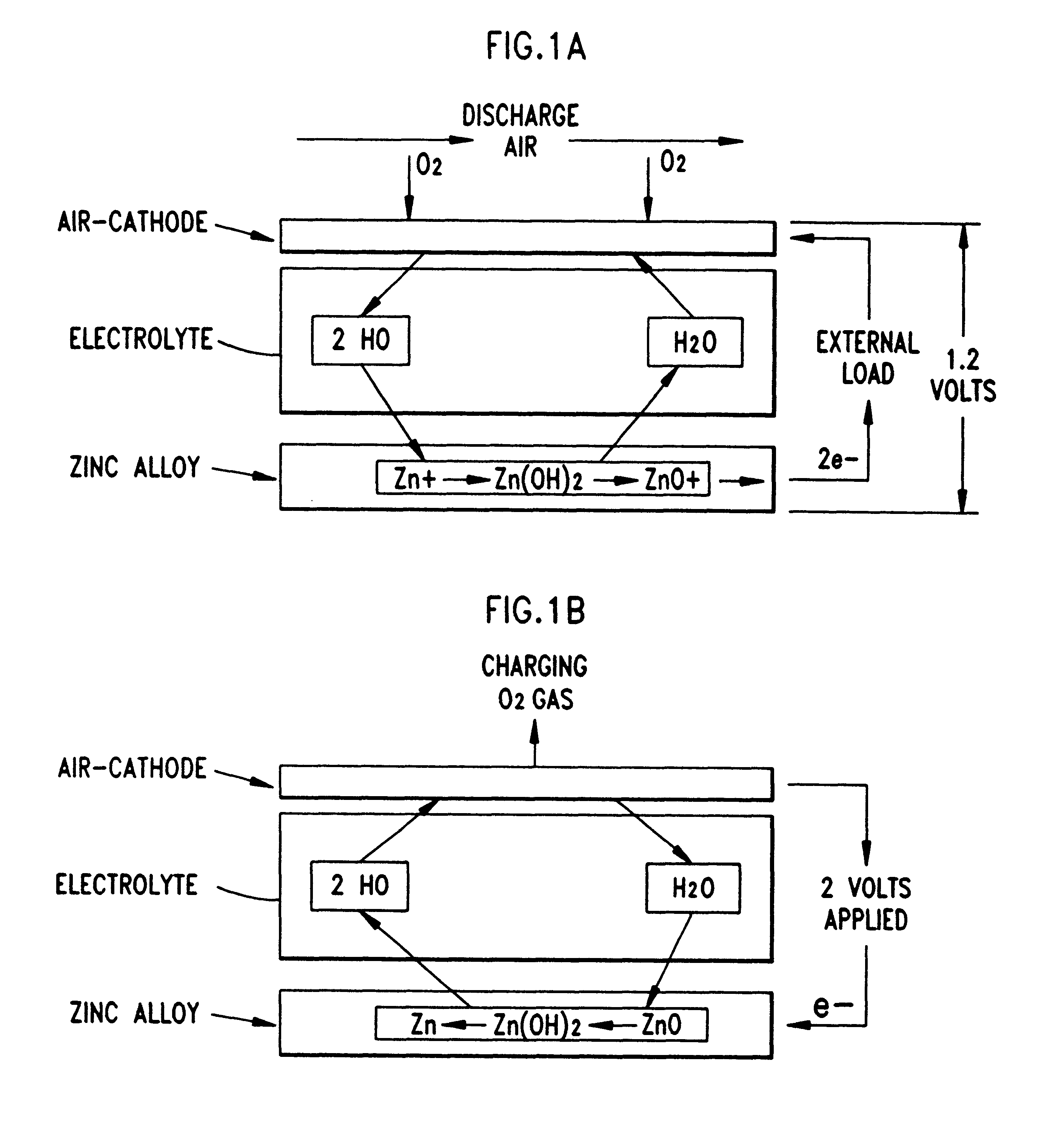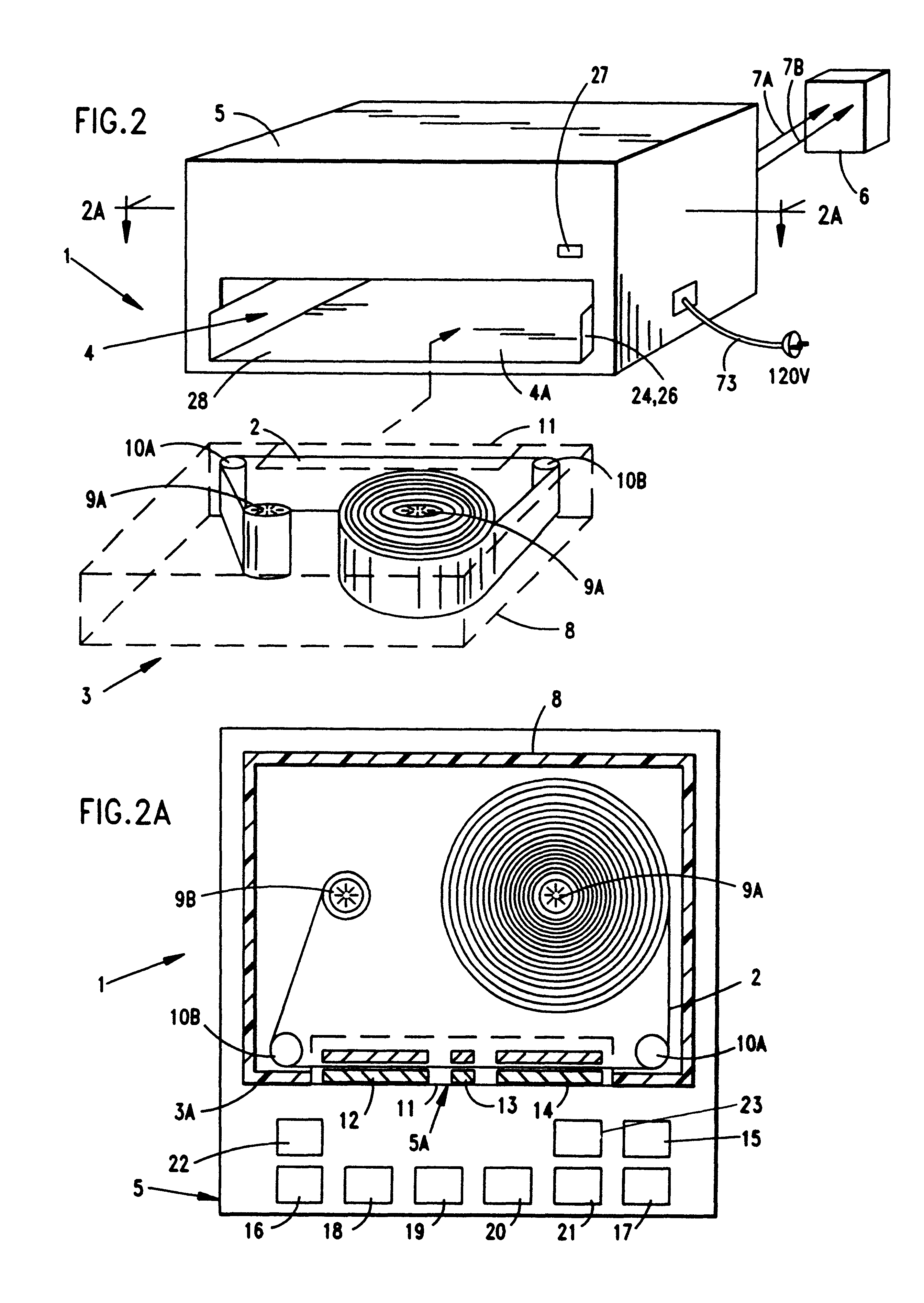System and method for producing electrical power using metal-air fuel cell battery technology
a fuel cell battery and metal-air technology, applied in the direction of fuel and secondary cells, climate sustainability, electric energy management, etc., can solve the problems of limited driving distance, limited operation time, and less power delivery
- Summary
- Abstract
- Description
- Claims
- Application Information
AI Technical Summary
Benefits of technology
Problems solved by technology
Method used
Image
Examples
Embodiment Construction
Of the Present Invention should be read in conjunction with the accompanying Drawings, wherein:
FIG. 1A is a schematic diagram illustrating the physical principles of operation of the metal-air fuel cell battery (FCB) system of the present invention operating in its discharging mode;
FIG. 1B is a schematic diagram illustrating the physical principles of operation of the metal-air FCB system of the present invention operating in its charging mode;
FIG. 2 is a perspective view of a first illustrative embodiment of the rechargeable metal-air FCB system of the present invention, wherein the anode metal fuel is provided in the form of transportable metal tape contained within a cassette-type device that is insertable within a storage bay of a compact power generation unit capable of producing electrical power over a range of output voltages selectable by the user;
FIG. 2A is a cross-sectional schematic diagram of the rechargeable metal-air FCB system of FIG. 2, showing (i) anode fuel tape be...
PUM
| Property | Measurement | Unit |
|---|---|---|
| temperatures | aaaaa | aaaaa |
| temperature | aaaaa | aaaaa |
| output voltages | aaaaa | aaaaa |
Abstract
Description
Claims
Application Information
 Login to View More
Login to View More - R&D
- Intellectual Property
- Life Sciences
- Materials
- Tech Scout
- Unparalleled Data Quality
- Higher Quality Content
- 60% Fewer Hallucinations
Browse by: Latest US Patents, China's latest patents, Technical Efficacy Thesaurus, Application Domain, Technology Topic, Popular Technical Reports.
© 2025 PatSnap. All rights reserved.Legal|Privacy policy|Modern Slavery Act Transparency Statement|Sitemap|About US| Contact US: help@patsnap.com



